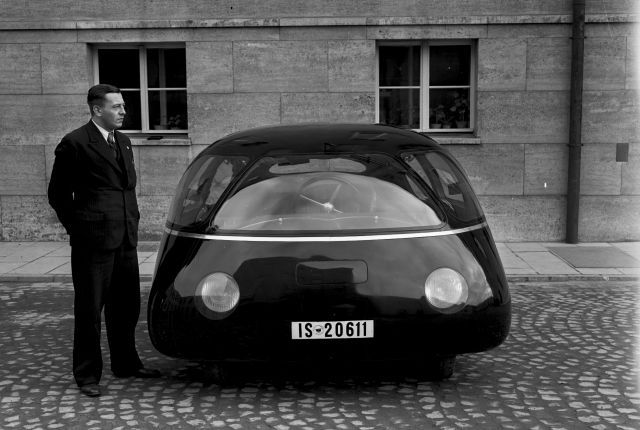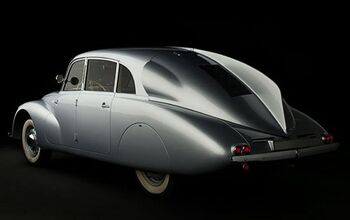An Illustrated History Of Automotive Aerodynamics Postscript: 1938 Schlrwagen

The biggest (only?) fringe benefit of my job is what I learn. Decades of perusing old books and magazines don’t begin to add up to the collective knowledge and perspective that TTAC’s commentators provide. Case in point: I wrote the Illustrated History of Automotive Aerodynamics because I’ve always been smitten by streamlined cars ever since I saw a Tatra as a young child. And I thought I had all the slippery bases pretty well covered. But thanks to a late comment by NeilBlanchard, I’ve been introduced to what is undoubtedly one of the most remarkable aerodynamic cars ever, the 1938 Schlörwagen. It was originally tested at Cd 0.186, but a later test by VW in the seventies of a model resulted in a Cd of 0.15. Either of these values put the “pillbug” at or near the top of the list of the most aerodynamic concept cars ever built, like the Ford Probe V of 1985, with a Cd of .137.
Built on the chassis of the rear-engine Mercedes 170H, it was substantially faster as well as 20% to 40% more fuel efficient than its donor car. The Russians took the Schlörwagen as war booty and conducted tests as a propeller driven vehicle (below). It represents a state of aerodynamic efficiency in league with the most aerodynamic cars being considered today, such as the Aptera. Thanks Neil; and the article has been duly updated as well as my knowledge.

More by Paul Niedermeyer
Latest Car Reviews
Read moreLatest Product Reviews
Read moreRecent Comments
- SCE to AUX Range only matters if you need more of it - just like towing capacity in trucks.I have a short-range EV and still manage to put 1000 miles/month on it, because the car is perfectly suited to my use case.There is no such thing as one-size-fits all with vehicles.
- Doug brockman There will be many many people living in apartments without dedicated charging facilities in future who will need personal vehicles to get to work and school and for whom mass transit will be an annoying inconvenience
- Jeff Self driving cars are not ready for prime time.
- Lichtronamo Watch as the non-us based automakers shift more production to Mexico in the future.
- 28-Cars-Later " Electrek recently dug around in Tesla’s online parts catalog and found that the windshield costs a whopping $1,900 to replace.To be fair, that’s around what a Mercedes S-Class or Rivian windshield costs, but the Tesla’s glass is unique because of its shape. It’s also worth noting that most insurance plans have glass replacement options that can make the repair a low- or zero-cost issue. "Now I understand why my insurance is so high despite no claims for years and about 7,500 annual miles between three cars.




































Comments
Join the conversation
You're very welcome, Paul! Now, if we can find the actual car, or build a replica... Sincerely, Neil Blanchard
Here is my collection of pictures of the Schlörwagen, which is virtually every picture I could find: http://smg.photobucket.com/user/NeilBlanchard/library/Schlor%20Pillbug?sort=3&page=1